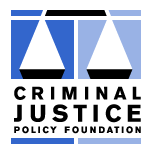

Improving America’s competitiveness in the Global Market
Every business leader knows that a cornerstone of America’s dynamic economy has been the intellectual capital generated by our educational system. America’s colleges and university produce highly skilled business leaders, scientists, and engineers who use our capitalist economic system to innovate and create value.
We are as dependent upon bright, well-trained college graduates as we are upon financial capital and an honest legal system. But since 2000, another unintended consequence of the war on drugs has blocked 178,000 qualified students from getting loans or grants to attend college, according the U.S. Department of Education. The “Souder amendment” to the Higher Education Act of 1965 bars anyone with a drug conviction from eligibility for a federal loan or grant.
Drug prohibition and the illegal drug market have made a defining mark on urban life in almost all cities, and Washington, DC is a prime example. The rampant crime that stems from drug prohibition deters residential development, stymies business development, threatens innocent citizens, and challenges the ingenuity of the police.
In October, the Washington Post ran the following article and columns about robbery and crime in D.C. neighborhoods, demonstrating again that drug-related crime is a major problem for business and our economy. This followed a series of Washington Post news accounts, editorials and press conferences in the spring and summer on the impact of drug crime and homicide on the economy of Prince George County, MD.
Lighting a Fire Under D.C. Is No Piece of Cake By Marc Fisher, Washington Post, October 18, 2005; Page B01
Police to Offer Reward for Robbery Tips Chief Vows to Quell D.C. Crime Surge Before It Worsens By Del Quentin Wilber, Washington Post, October 15, 2005; Page B03
Corner Carryout In a Crossfire on An Urban Frontier By Marc Fisher, Washington Post, October 11, 2005; Page B01
The Minneapolis Federal Reserve Bank sponsors an annual essay contest for regional high school students and this year's topic has grabbed the attention of drug policy reformers and the Star Tribune.
The bank asks students to write about the economic lessons of an illegal drug sale. Students are encouraged to write about concepts such as externalities and cost-benefit analysis, which contest organizers suggest may help "gain some perspective" on the illegal drug market.
For more information, read the contest details.
Benefit-Cost in the California Treatment Outcome Project: Does Substance Abuse Treatment “Pay for Itself”? Health Services Research, UCLA. 2005.
In their research of over 3,000 patients receiving substance abuse treatment in California, a UCLA research team calculated that while, on average, substance abuse treatment costs $1,583 per person, it is associated with a monetary benefit to society of $11,487. Other benefits of methadone maintenance, outpatient and residential treatment over the 9-month study period included:
- Victimization costs dropped by $3,019 as a result of crime reduction.
- The overall reduction in crime costs was $5,676 per treatment, and the overall reduction in incarceration costs per treatment was $1,788.
-
The average per capita increase in earnings was $3,352.
-
The overall ratio of benefits to costs was 7:1.
Read the full CJPF research summary
Read the UCLA report
The Anchorage Daily News recently profiled an IRS supervisor who leads a nine person IRS team to investigate money laundering by narcotics sellers in Alaska. Read the full CJPF analysis of how the federal government is subsidizing every illegal drug seller they don't catch, which is most of them.
Q: How much do the state and federal governments spend on the War on Drugs?
A: Nobody really knows. The “National Narcotics Leadership Act of 1988” (in Title I of the “Anti-Drug Abuse Act of 1988, P.C. 100-690), set up the Office of National Drug Control Policy (ONDCP) in the White House. One of the major duties of the director of the ONDCP is to annually develop “a consolidated National Drug Control Program budget proposal,”... Read full analysis
|
Join CJPF at the 2005 International Drug Policy Reform Conference: "Building a Movement for Reason, Compassion and Justice". Sponsored by the Drug Policy Alliance, it will be held November 9-12 in Long Beach, CA. Eric E. Sterling will be a featured speaker at the event. |
Criminal Justice Policy Foundation
8730 Georgia Ave, Suite 400
Silver Spring, MD 20910
ph: 301.589.6020 | fax: 301.589.5056
www.cjpf.org | info@cjpf.org
To unsubscribe from this list, email info@cjpf.orgwith the subject line "unsubscribe"